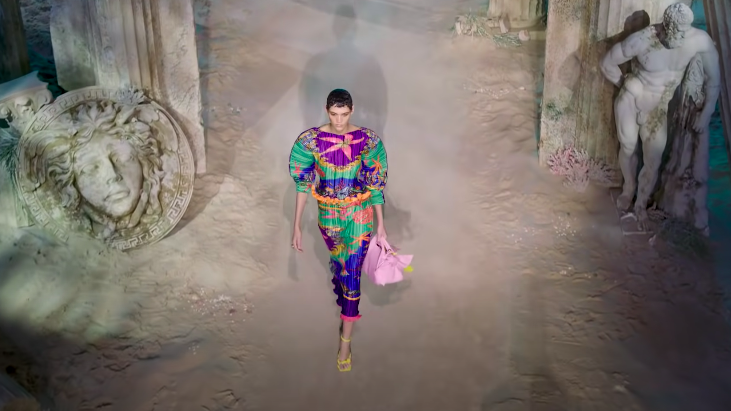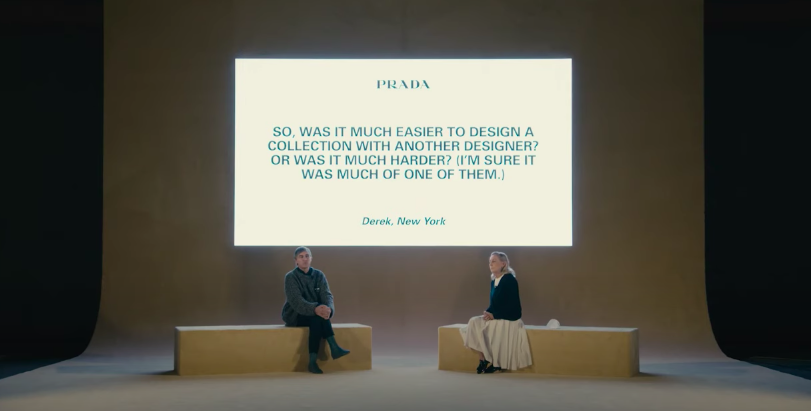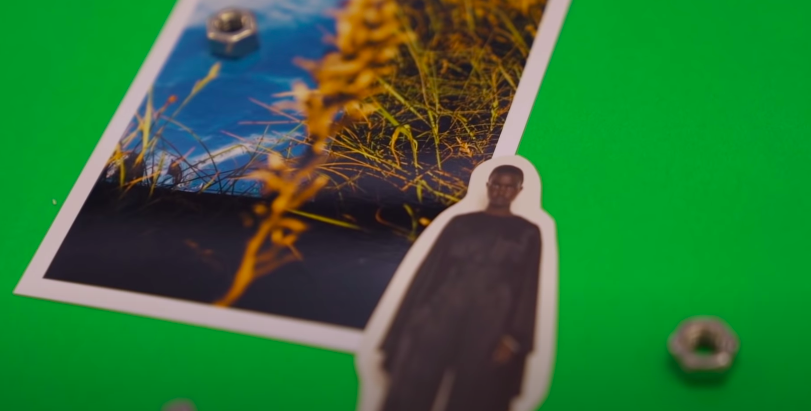Luxury brands are often unsure of how to best connect and engage with the audiences on YouTube, particularly during key moments like Fashion Week. But now thanks to a new report from Launchmetrics, the numbers speak for themselves. Those who take a longer-term view towards what type of content they feature on the video-sharing platform, are ultimately the ones that win big.

Luxury brands are often unsure of how to best connect and engage with the audiences on YouTube, particularly during key moments like Fashion Week. But now thanks to a new report from Launchmetrics, the numbers speak for themselves. Those who take a longer-term view towards what type of content they feature on the video-sharing platform, are ultimately the ones that win big.
Imagine this. It’s Fashion Week. But it’s the height of the global COVID-19 pandemic and you’re a leading luxury brand who wants to connect and engage with your audiences, most of whom were stuck at home.
The fashion show, as it is more traditionally known, has gone digital. But aside from just live-streaming, what were the key moments that really spoke to audiences during this time? And what can brands learn from the creative trailblazers who rethought how fashion can be presented online?
For Derek Blasberg, Head of Fashion and Beauty at YouTube, the platform has unsurprisingly become an important place for brands to celebrate fashion digital, particularly during the pandemic. “We saw a lot of fashion films; we saw a lot of live-streamed fashion shows. And through those brands, it proved that the true reach of a fashion show extends far beyond just a front row.”
“For both established and emerging brands, YouTube was not only an opportunity to reach more fans than ever before, it's become a necessity to stay engaged with an ever-growing and ever-evolving global audience,” he added.

New Forays Into New Formats
The first thing to note is that brands should consider new formats, according to the latest report from Launchmetrics and YouTube, which looks at the longtail impact of video marketing on the platform. After Prada presented its first collection designed by Raf Simons and Miuccia Prada, the two creative directors sat down to answer live questions, experimenting with a more inclusive and intimate format of an interview.
In the 60 days following the launch, the collection saw a rise of more than 350 percent in engagement and more than 400 percent in views. And its livestream of the show, and the conversation around it helped it to earn a total of over $270,000 in Media Impact Value.
“Fashion shows today are no longer about just activating an industry audience,” said Launchmetrics Chief Marketing Officer Alison Bringé. “It's no longer just about who's in the front row, but how you can create this welcoming, inclusive concept that will engage consumer audiences to tune in to your event.”
Right Person For the Right Platform
The second point for luxury brands to consider is the impact of partnering with influential profiles on the right platform. Dior’s collaboration with the iconic rapper and founder of record label Cactus Jack, Travis Scott, one of YouTube’s more influential presences who has already established a solid audience on its platform, made perfect sense.
Showcasing the collection at Paris Men’s Fashion Week, Dior’s Spring 2022 Menswear show was the first that the house had collaborated on with a musician. By tapping into the right platform, given YouTube’s existing impact on music and the right representative, Dior was able to amplify its message that much more. Engagement, 60 days after the event, increased by more than 450 percent, and views were up by 176 percent.
“Dior is always one of the best in class brands when it comes to how they leverage their own media channels,” said Bringé. “They’re hyper tuned into who their audience is, and how to build strategies to resonate with that audience.”
“It's key to work with creators that, embody the audience you're trying to target,” she added. “A key factor when working with YouTube creators is to find people that have a strong following on YouTube… to have the right voices to drive the right audience, to create the right value.”
Multiple Your Media Partners
When thinking about media in today’s digital landscape, brands should consider all the media channels that they have at their fingertips. Take the Pyer Moss show in July 2021, which marked the first time the Fédération de la Haute Couture invited a Black American designer to present a collection in the couture calendar, representing a key moment in fashion history.
A brand’s show is not just covered through its own media channels, but of others too, all of which have their own multimedia channels and presences on different platforms as well. Vogue, as the report puts it, is no longer just print, but also an online fashion ‘bible’ that can help a brand to expand its reach and grow engagement not just with still images, but also moving content.
Just 60 days after Pyer Moss’ show, the MIV® on YouTube grew by 16,128 percent. aAll of the top 10 videos came from media publications covering the show or creating related content. The increase of MIV® from the Media Voice after 60 days of the event was a staggering 13,276 percent, with 31 additional placements.
“The show itself was the centrepiece sparked conversations across the industry, not only about fashion but about social justice,” said Blasberg. “Publications like Vogue Harper's Bazaar, the Associated Press kept that discussion going well past the day the show generating remarkable growth in viewership across the board.”

Merge Online With Offline
It goes without saying that brands need to build campaigns that try to connect the physical and digital worlds. Following the success of his first “show-in-a-box” concept, designer Jonathan Anderson returned to the format to present for his SS21 collection.
Taking a creative and interactive approach, Anderson demonstrated a masterclass in how to create lasting momentum behind the limited time frame of a runway show. By sending a box to editors and key people in the fashion industry, that including paper silhouettes of JW Anderson’s latest collection, he encouraged people to touch and play with the cut-out garments, while they simultaneously watches a YouTube video of him talking through the clothes and each element of the box, giving further depth and content to the physical items they received.
JW Anderson achieved a 2,989 percent increase in YouTube engagement 60 days post-launch, and the campaign is still continuing its momentum, resulting in a longer term success. Views of the YouTube video on the brand’s SS21 collection increased by 555 percent over the following 60 days.
“The biggest thing that we noticed is that previously brands were hesitant on pulling back the curtain too much, and they felt like this moment in time needed to be preserved for the fashion elite,” said Bringé. “But what we have seen perform the best is those brands that are continuing to mould, or to put together the physical and the digital, and that's absolutely going to be the future.”
Think Multiple, Not Singular
And last but not least, when it comes to creating content on YouTube, brands should think about creating more of a series than just a one-off posting. In addition to live-streaming its show, Versace also released five videos in relation to its Versacepolis collection. The brand saw an increase of more than 500 percent in MIV® and over 700 percent in engagement as a result of its frequent posting within the 60 days post-show. Like most social platforms, YouTube encourages users to publish uploads frequently, so brands who make smart decisions on posting frequency will see positive results.
In the end, the key to an increased brand performance lies in creating a long-term strategy; introducing a series of video content rather than a one-off posting helps create a lasting impact.
“What we constantly reinforce to our fashion partners is that the golden rule for YouTube is that content should be around six to 10 minutes long, it should have a narrative, so has a beginning, a middle, and an end and that it reveals a secret, teaches a lesson or peels back the curtain in some way to the viewer,” said Blasberg.
“So, the best content definitely tells a story. It's more than just a pretty video of a girl walking down the beach holding a purse or models walking back and forth on the runway,” he added. “Right now, to win in the digital sphere, you need to think beyond the runway, you need to think about how to tell your story on your own channel and on your own terms, and control your own narrative,” he added.










